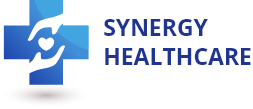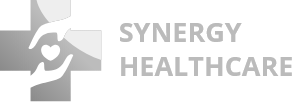Summary:
Tracking key revenue cycle management KPIs is essential for healthcare providers to optimize revenue and reduce inefficiencies. This article highlights six crucial metrics: Clean Claim Rate, Place of Service Cash Collection, Accounts Received, DNFB (Discharges Not Fully Billed), Revenue Based on Encounter, and Claims Denial Rate. Monitoring these helps improve cash flow, billing accuracy, and financial health.
In recent years, revenue cycle management has been getting quite the spotlight. When it comes to medical institutions it has not only bridged the gap between the clinical and business side of things but also helped the entire process of medical billing and coding easier to deal with. The entire process right from the start of scheduling the appointment of a patient right till the end of the reimbursement process from the insurance payers, RCM includes all of it.
There are several revenue cycle management KPIs that play a key role in helping to make decisions that are data-driven and also create projects that lead to the transformation of the business. The KPIs under revenue cycle management helps to enable the criterion of the performance required in revenue cycle management. It increases the cash flow besides reducing the errors in the billing and coding, complies with the proper medical guidelines, ensures maintain the proper quality of the documentation, and looks into the responsiveness of the patient-centric team.
There are hundreds of metrics that are deemed to be industry standard and are available out there. According to the Healthcare Financial Management Association, there are 29 stand metrics, however, for easier understanding 6 revenue cycle management KPIs have been included in this article.
6 Revenue Cycle Management KPIs That Help to Keep Proper Track

Any medical institution or a hospital, no matter how big or small, requires KPIs in order to keep proper track of the RCM. Through the monitoring and measuring of the revenue cycle management KPIs, that one is able to get the most productivity out of the revenue cycle management. It also allows medical practitioners to invest properly in patient care and technology.
1. Clean Claim Rate
This refers to the percentage of the insurance claims that have been submitted successfully and reimbursed on the first submission. When the clean claim rate is higher in number it helps to reduce the time of the compensation thereby getting it faster. When the claims do not get resolved right on the first try, it leads to a significant cost increase both for the payer and the provider.
When the clean claim rate is measured on a regular basis it permits healthcare providers to keep a track of the claim submission efficiency thereby calculating the cost and average duration for all the claims that need to be re-processed.
2. Place of Service Cash Collection
Healthcare Financial Management Association defines the process of Place of Service cash collection as all of the total cash that is collected from the patient party either after or before the healthcare service is provided. It also includes all of the co-pays along with the self-pays. In order to calculate the proper value of KPI, it is important to divide the payments received from POS with the self-pay cash that is collected.
One of the main benefits that help with the measurement of POS cash collection is that it leads to the enabling of improvement of POS system efficiency. It also rightly identifies and troubleshoots the core problems which lie in the POS system which in turn affects the overall process of RCM.
3. Accounts Received
Medical Group Management Association helps in providing a benchmark for Accounts Received. This particular KPI helps in identifying the average time that is required by the team or the system when it comes to collecting payments for the medical services. The calculation that can be done when trying to find out Accounts Received is to follow these steps.
A. Calculating the average charges on a daily basis: Adding up the daily charges for all the months and then dividing the total amount with the number of days for the selected time period.
B. Dividing the total AR with the average daily charges.
4. DNFB (Discharges Not Fully Billed)
This metric is useful when it comes to comparing several different medical organizations under a single region. DNFB or Discharges Not Fully Billed can also be calculated when the unbilled charges of the discharged patients get calculated with the daily revenue.
DNFB thus is applicable to any condition where the patient who was admitted gets discharged from the hospital without getting billed for the medical services they were provided with. It is important that the DNFB gets maintained according to the standards of the industry in order to ensure that the services provided can therefore be converted into cash later on. In a fast-paced place such as the ER, it is important to maintain DNFB or else it could lead to notable leakages in revenue.
5. Revenue Based on Encounter
Revenue based on each encounter is defined by the computation of the net collected revenue divided by the total patient visits for each of the given months. In RCM, this metric helps in providing a proper view of the revenue cycle.
6. Claims Denial Rate
In order to get the correct number for the claims denial rate, it is important to divide the total number of claims by the total amount submitted by the payers for a certain time period. When the claim denial rate remains below 5% it is an indication of a healthy revenue cycle. An acceptable rate is to remain between 5 to 10%. If however, your claims denial rate exceeds 10% it is crucial you analyze the coding, eligibility verification along with the proper credentials.
Why Partnering with the Right Outsourcing Companies Can Help Your Hospital?
In order to run a hospital that is financially sound and makes a good amount of profit, partnering with the right outsourcing company for your medical billing and coding practices is extremely helpful. The top Revenue Cycle Management companies like Synergy HCLS not only use state-of-art technology but are hard-working, diligent, and focused on making error-free claim submissions.
The healthcare industry is a fast-paced one and in order to keep up with the pace, it is crucial to partner up with experts who can focus on providing you with the best services. They can also pave the way in bringing financial success to the hospital through the use of top-tier technology, trained experts, and following data-driven procedures. So, if you want to take your hospital’s revenue to the next level, get in touch with Synergy HCLS right away!


